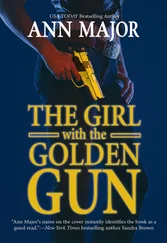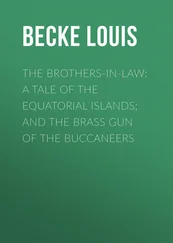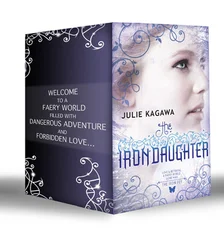What made the gun particularly popular was its internal design, a delight to anyone interested in skirting federal restrictions on ownership of machine guns. “ATF was concerned because those damn weapons were so easily converted to full-automatic fire,” Taylor said. “An individual could convert one in a minute or two, or maybe even less time than that.” (“In seconds,” said another retired ATF agent familiar with the guns.)
All a buyer had to do was file down a small metal catch—the “trip”—that caught the bolt after each shot, thereby leaving the bolt free to spring forward and fire machine-gun style. Demand for the guns soared nationwide, and black markets formed as middlemen, including one Georgia policeman, bought large quantities, converted the guns, and resold them to the drug underworld. These weapons triggered the arms race that today confronts law-enforcement officers across the nation.
In October 1981, Wayne Daniel married a striking Alabama woman named Sylvia Williams. In November, Sylvia, and Wayne’s son from a previous marriage, Wayne “Buddy” Daniel, became members of RPB’s board of directors. Sylvia would soon prove a feisty, outspoken opponent of ATF, bent on pushing the limits of the law in the name of the Second Amendment and free enterprise, at no small cost to society at large. She and Wayne made no secret of their loyalties. At one point, they produced little plastic badges that read BATF SUCKS.
♦ ♦ ♦
By the autumn of 1981, Wayne Daniel found himself struggling against increasing pressure from the FBI, ATF, and the Georgia Bureau of Investigation, as all three agencies investigated the activities of John Leibolt, by now one of RPB’s three shareholders. (The other two shareholders were Wayne Daniel and Leibolt’s son.) ATF threatened to pull the federal license that allowed RPB to make and sell guns—its Federal Firearms License—because of Leibolt’s suspected criminal activities. Minutes of RPB’s board meetings show that Leibolt’s legal troubles had made it difficult for RPB to secure credit and, moreover, had left the company exposed to the threat of criminal charges.
In a special board meeting held December 14, 1981, Wayne, according to the minutes, denounced “the general irrepute that the association of Mr. Leibolt” had brought to the company. Because of John Leibolt’s dabbling in the narcotics trade, Wayne said, he “personally did not want to be in business with either one of the Lei-bolts.”
Two weeks later the board met again and resolved to buy back Leibolt’s stock and thus sever his ties to the company. Leibolt, however, had fled Georgia. The minutes of RPB’s January 20, 1982, board meeting noted that Leibolt “refuses to come to Atlanta and has stated he will not step foot in the State of Georgia due to fear of being arrested.” The board resolved to liquidate the company.
ATF, meanwhile, classified RPB’s semiautomatic Ingram as a machine gun, arguing it was so easy to convert that even in semiautomatic form it should fall under the far stricter regulations that governed the sale of automatic weapons. The ATF technical branch in Washington made a videotape to show just how easily a buyer could convert the gun.
RPB challenged the ATF decision. A federal judge backed the agency, but to reduce the fiscal hardship imposed on RPB by the ruling allowed the company time to continue manufacturing the weapon and selling off existing stocks. Any gun assembled before June 21, 1982, would be classed as a semiautomatic; the same gun made one day later would be a machine gun subject to federal restrictions.
This delay, a surprise bonus for RPB, provided another example of the willingness within our culture to overlook the inherent deadliness of guns. The threat of a ban boosted demand for the gun, and according to Earl Taylor, RPB accelerated production and sales. “They knew that weapon was going to be outlawed, they knew it was going to be worth a hell of a lot more money once you couldn’t produce it anymore, so I guess it made sense to go for it.”
June proved a profitable month for RPB. Gun consumers—far from being put off by the gun’s lethal reputation and the ATF ruling—rushed to buy the last of the weapons before the deadline. The company’s final after-tax profit doubled over that of May, for a profit margin—net income as a percentage of gross sales—of 37 percent.
The next month, with the ruling in effect, the company’s net income plummeted to just one-sixteenth of the June total.
In September, the RPB board approved a final plan for liquidating the company; in October, an auction house sold its assets for half a million dollars.
A reasonable man might expect that at this point the gun, this weapon built to kill soldiers in close combat and adopted by dope peddlers and urban gangs, would be allowed to disappear from America’s arsenal and consigned to Thomas Nelson’s history books. But RPB Industries rose quickly from the tomb, this time as S.W. Daniel Inc., named for Sylvia Williams Daniel. After ATF’s ruling the Daniels set out in earnest to develop a weapon that could be sold readily to the public. They succeeded—introducing by 1983 the Cobray M-11/9—but nonetheless continued sending prototype after prototype to the ATF technical branch in Washington, as if probing for holes in the law. Once, for example, they sent a prototype of what they claimed was a single-shot weapon. It was the same weapon that previously had been ruled a machine gun, but with a plate over the bottom of the grip where the magazine would otherwise be inserted. ATF, however, found that the plate could be removed and classified this weapon too as a machine gun.
The company also sold machine-gun “flats,” stamped and notched pieces of steel that could be bent to form the frame, or “lower receiver,” of a machine gun. Under federal law, a machine-gun receiver is treated as if it were a complete firearm. The flats, however, were legal, provided they were left unbent and certain holes were left undrilled. All a consumer had to do to commit an instant felony was to drill out a single hole—but that was the consumer’s problem.
The Daniels knew their market well, said Earl Taylor. “I’ve always had a hunch that Wayne and Sylvia were not so much believers in all the pro-gun propaganda that goes on and that they so freely talk about, but that they were more interested in making money than anything else.” Of Wayne, he said, “He’s got a reputation for testing the waters, so to speak. He’ll come close to the edge of the envelope—maybe not blatantly doing something illegal, but he’s very anxious to test and see how far he can go in the weapons field.”
Wayne’s attitude, according to Taylor, made his products all the more attractive to gun buyers. “He can kind of feel the pulse of this gun culture out there and kind of say things and do things and market things that appeal to those people.”
Indeed, far from embarking on a PR campaign to sweeten the gun’s reputation, Sylvia and Wayne played up its bloody history, marketing the Cobray as “The Gun That Made the Eighties Roar.”
The company’s marketing ideology soon led it to begin a business venture that provides a case study in how powerless our society is to control the easy traffic in the tools of murder. This new venture would trigger a nationwide ATF investigation that exposed widespread illegal sales of weapons to neo-Nazis, the IRA, and assorted felons; exposed the illegal practices of federally licensed gun dealers; and resulted in the arrests of hundreds of the company’s customers—yet left Sylvia, Wayne, and their corporation virtually unscathed.
♦ ♦ ♦
Wayne Daniel may have felt it a personal affront to work alongside John Leibolt, but he felt no such moral reluctance when in January 1983 he and Sylvia invited two men, Joseph Ledbetter and Travis Motes, to their home to make the men a proposition.
Читать дальше
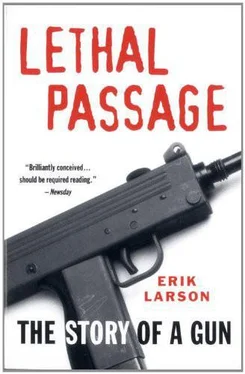
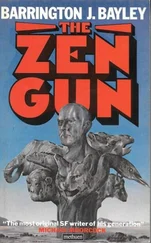
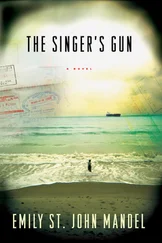

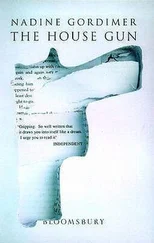

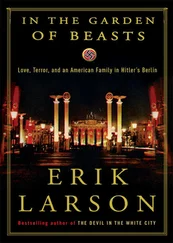

![Ричард Деминг - Whistle Past the Graveyard [= Give the Girl a Gun]](/books/412176/richard-deming-whistle-past-the-graveyard-give-t-thumb.webp)
